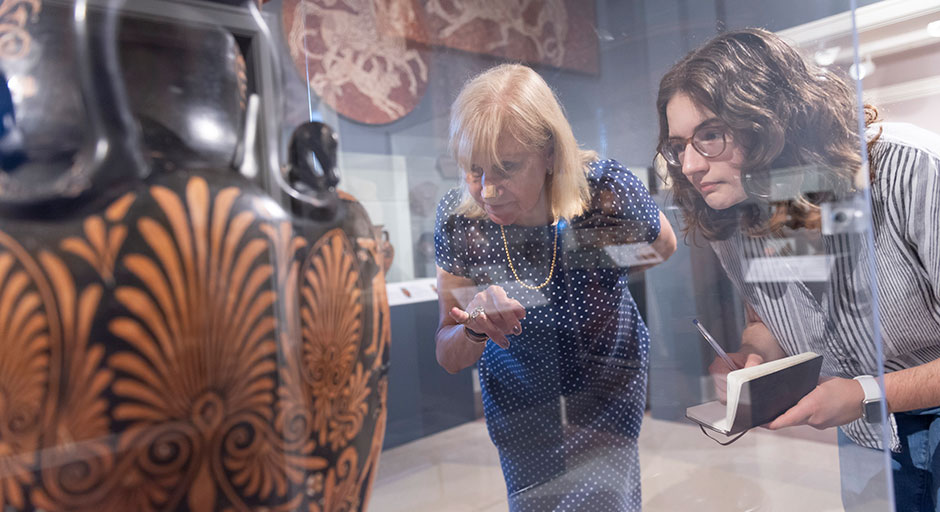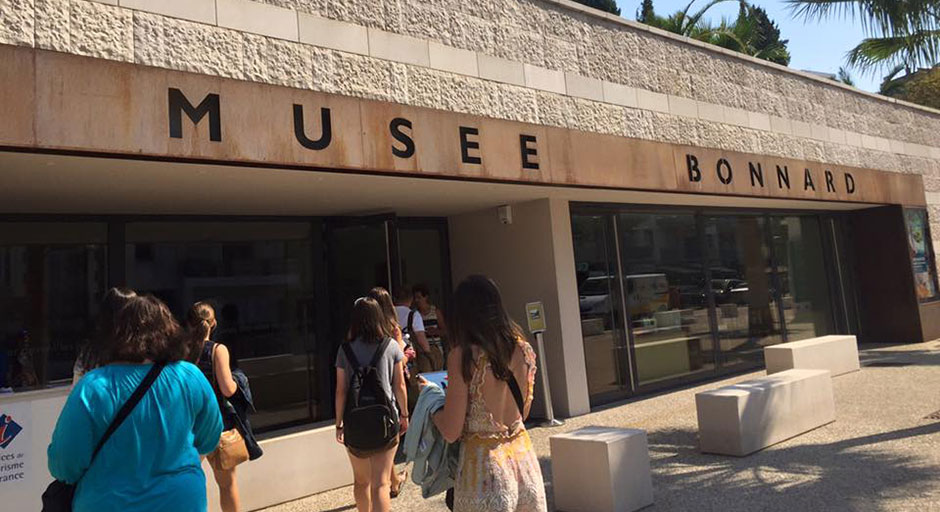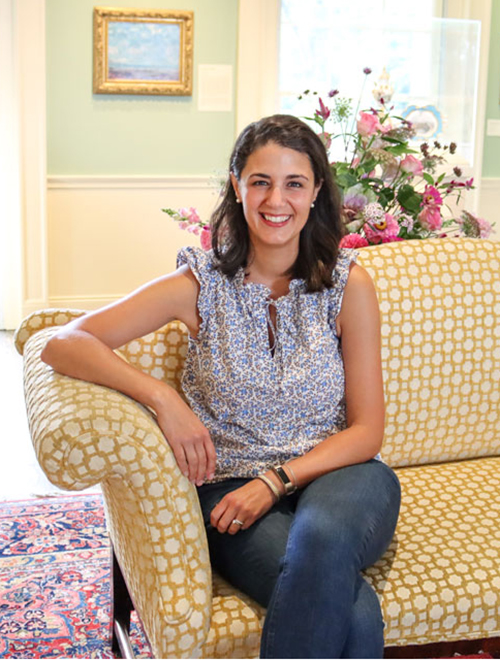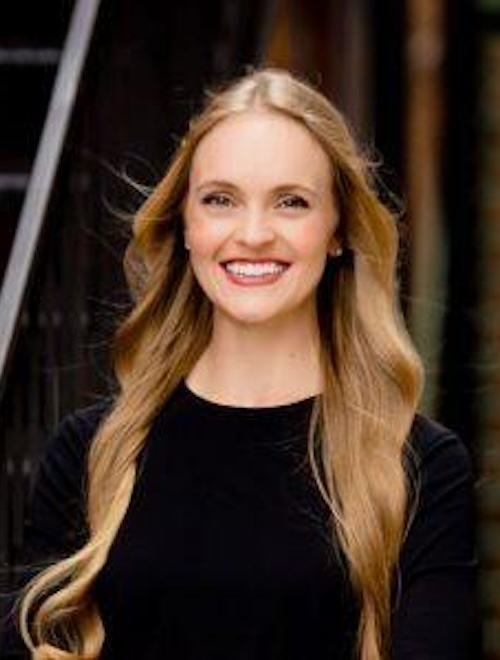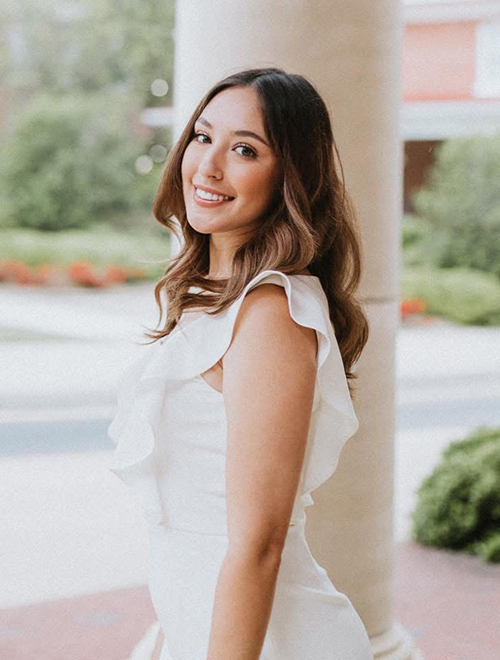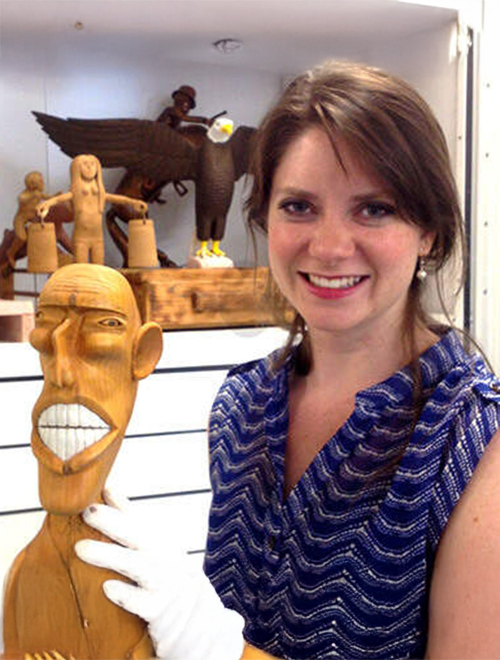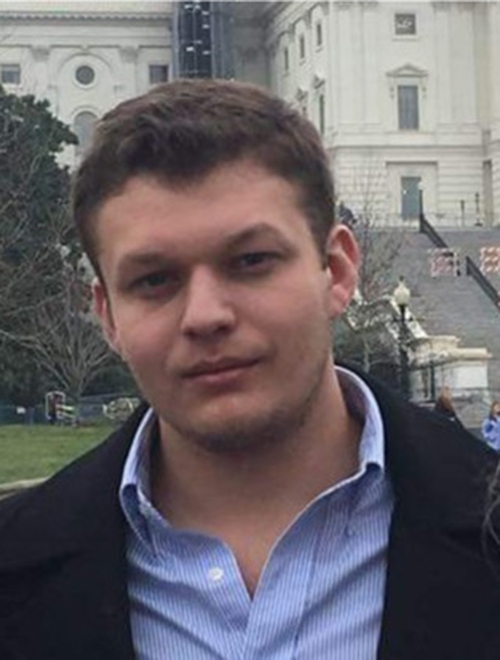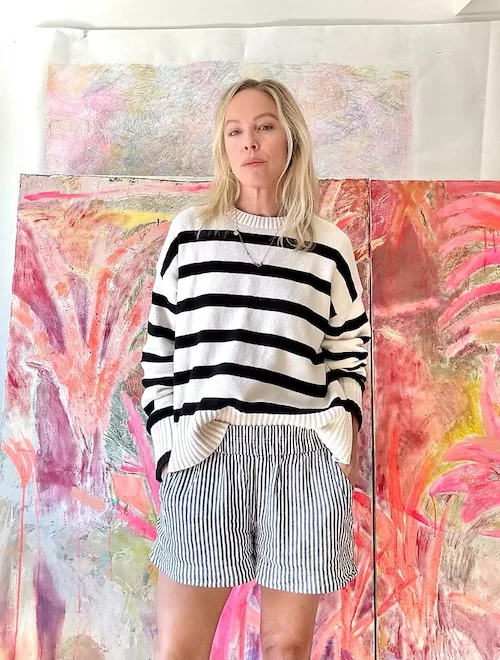Art History
As an art history major, you will study art across a wide range of media, cultures, and periods while you learn about the historical, social, and political contexts.

"It’s just such a cool way to study human history and human culture."
Grace Moorman
BA in Art History
Study The Meaning Behind Art & Its Impact
Learn about monuments, significant artists, and artistic periods in Western and non-Western cultures. Gain art studio fundamentals, learn about art theory and criticism, conduct research, and discern the hidden and not-so-hidden ideas behind images.
Beyond the study of art styles and trends, art history students are trained to communicate their own ideas about artwork and its various meanings. They can bring this knowledge to bear on an expansive array of careers, including arts administration, auction houses, art conservation, education, archives, publishing, art criticism, museums, galleries, and historical societies. By honing oral and written methods of analysis, their critical thinking skills can even be applied far beyond the field of art history.
Meet Our Student Ambassadors
-

Gwen Pfrenger's Journey To Commencement
Gwen Pfrenger, an Oxford, MS, native graduating with a degree in art history, found her passion for museums and storytelling deepened through international study, research opportunities, and faculty mentorship at the University of Mississippi. Her standout experiences include presenting on ancient artifacts at a classics conference and studying abroad in Berlin, all while navigating the challenges of an ambitious academic load with strong support from her professors. Looking ahead, she plans to work in museums or archives, with aspirations of becoming a curator and contributing to a more inclusive and thoughtful art world.
JTC 25: A Passion for Art and History
Featured Courses
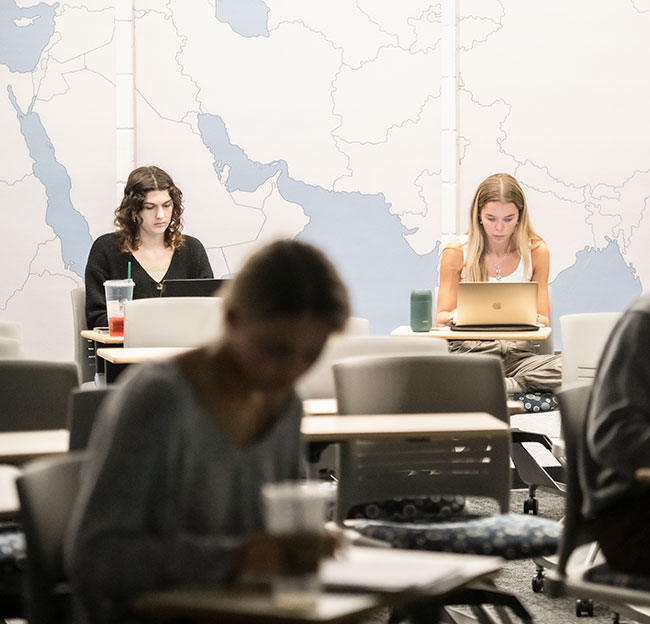
AH 101: Introduction to Western Art
For all students interested in acquiring an understanding of the visual arts. An introductory survey of painting, sculpture, and architecture in the Western world.
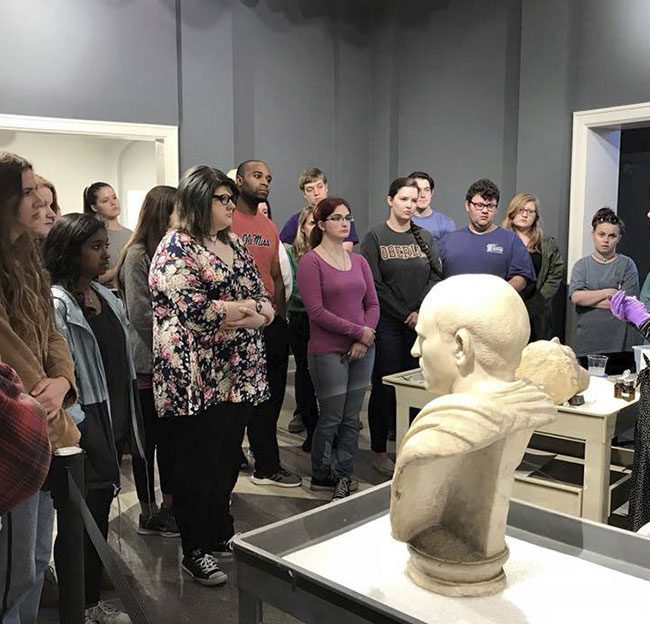
AH 201: History of Art I
A survey of prehistoric and ancient cultures through the Middle Ages. Includes representative examples and styles of art and architecture of Western and non-Western cultures.
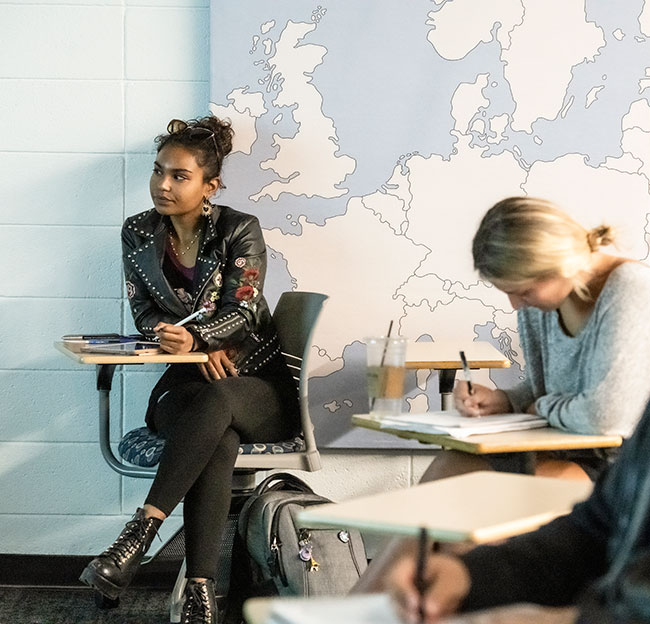
AH 401: Research and Writing in Art
Methods of research, bibliography, use, and criticism of source material, individual reports, and presentation of papers. Required of all art history majors and all B.F.A. candidates in the junior year.
Facilities

Meek Hall
Meek 120 is available for art history classes. It has a multi-media control lectern, a desktop computer, a ceiling-mounted LCD projector, and a 12-foot-wide projection screen. Meek 138 is an auditorium with elevated seating. It is equipped with a multi-media control lectern, a desktop computer, a ceiling-mounted projector, and a 20-foot-wide projection screen. This space is shared with the Department of Theatre & Film and is available for introductory art history classes in the mornings.
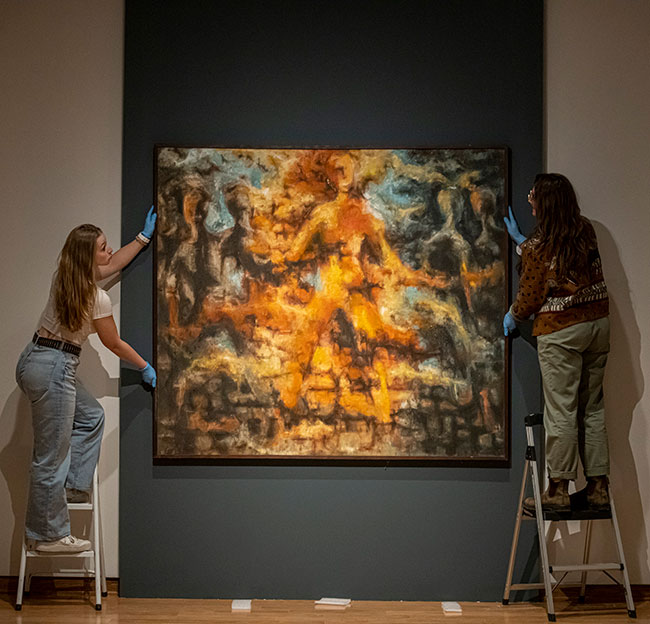
UM Museum
The UM Museum and Historic Houses complex is an instructional site for our students. Among its holdings are Southern folk art, Greek and Roman antiquities, 19th century scientific instruments, and American fine art. Part of the museum complex is Rowan Oak, a historic literary site that was once the home of William Faulkner, Nobel and Pulitzer Prize-winning author. The Museum also owns the Walton-Young Historic House – once home to critic and satirist Stark Young.
Beyond the Classroom
Student clubs are an integral part of the learning process and connect students with each other and to our art history community.
The student organization for art history, the Vasari Society, is named for the “grandfather” of art history, Giorgio Vasari (1511-1574), who was famous for his biographies of Italian Renaissance artists. Membership in open to any student on campus.
They sponsor movie nights, travel together to view exhibitions in town and beyond, and bring a wide variety of guest speakers to campus – from academics to alumni to museum/gallery staff. Students have the opportunity to meet informally with these professionals. A special treat was the recent opportunity to meet the former Director of the Versailles Museums in Paris. For information, contact Vasari faculty advisor Professor Nancy Wicker.
In addition to the professionals who visit campus through the Vasari Society, the department sponsors Art Talks, a visiting art and art historian program. By creating access to artists and art historians in person or via webcam, students and faculty keep pace with trends in the field, contemporary artistic practice, and emerging technology used in cultural production today.
The list of visitors working in the field of art history – through the Vasari Society or Art Talks – is long and illustrious. A short sample includes:
- Jock Reynolds, recently retired Henry J. Heinz II Director of the Yale University Art Gallery to discuss creation of a new Museum Studies minor.
- Pierre Arizzoli-Clémental, General Director of the Palace, Museum and National Estate of Versailles (1997–2009) and father of UM art historian, Dr. Louise Arizzoli.
- Sherry Lindquist, Associate Professor of Art and Design, Western Illinois University. “Sex, Gender, and the Ethereal Body in Medieval Art”.
- Genevieve Hill-Thomas, Liberal Arts Faculty, Ringling College of Art and Design, St. Petersburg FL. “Faso Dan Fani: The Language of Marka Textiles in Burkina Faso”.
- Douglas Lewis, Curator Emeritus of Sculpture and Decorative Arts, National Gallery, Washington, D.C.
- Emily Burns, “Rosa Bonheur and the Transnational Identity Politics of the American West in France.”
Students and faculty work together to identify relevant internships, both on campus at the UM Museum and off-campus at a variety of sites. The UM Office of Outreach’s formal Internship Experience program also assists students with internship placements in Atlanta, New York City, and Washington D.C.
Internships provide valuable work experience, professional networks, further application of art history skills, and a stronger resume.
Art history majors have exciting opportunities to experience the art and architecture abroad. They can arrange their own study abroad experience through the Office of Study Abroad. Or, they can travel with UM faculty.
One possibility is the formal course titled Art on Location, where UM faculty can take a course of students to different locations around the US and abroad. For example, in the 2-week Winter Intersession in January 2019, art historian Dr. Louise Arrizoli teamed up with a French professor to offer a study of art in Paris, France.
Meet Our Alumni
See some examples of where an art history degree can take you.

